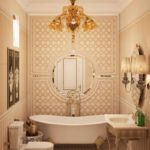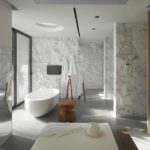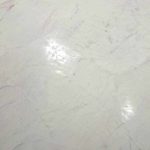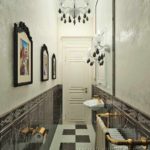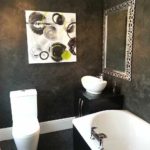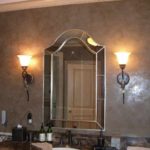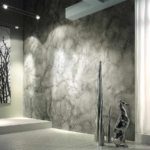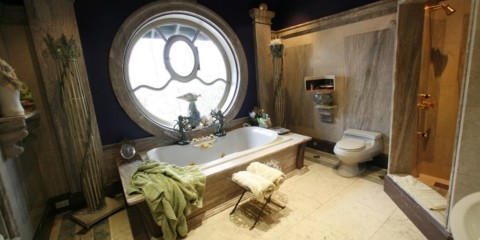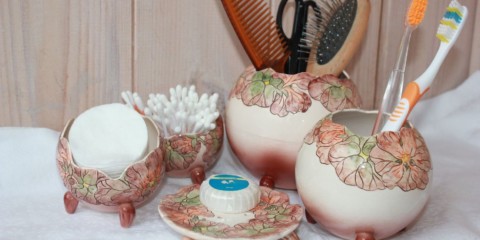 A bathroom
2 m2 bathroom design in different types of housing
A bathroom
2 m2 bathroom design in different types of housing
Due to the special microclimate that reigns in the bathroom, most often they use ceramic tiles, marble, granite, plastic. There is no need to talk about plaster and wood. But what if for a certain style it is necessary to cover the walls or ceiling with these materials. For these purposes, decorative plaster was invented. It would seem - a way out. But it also has its own characteristics, advantages and disadvantages. So today we will disassemble this miracle of modern design.
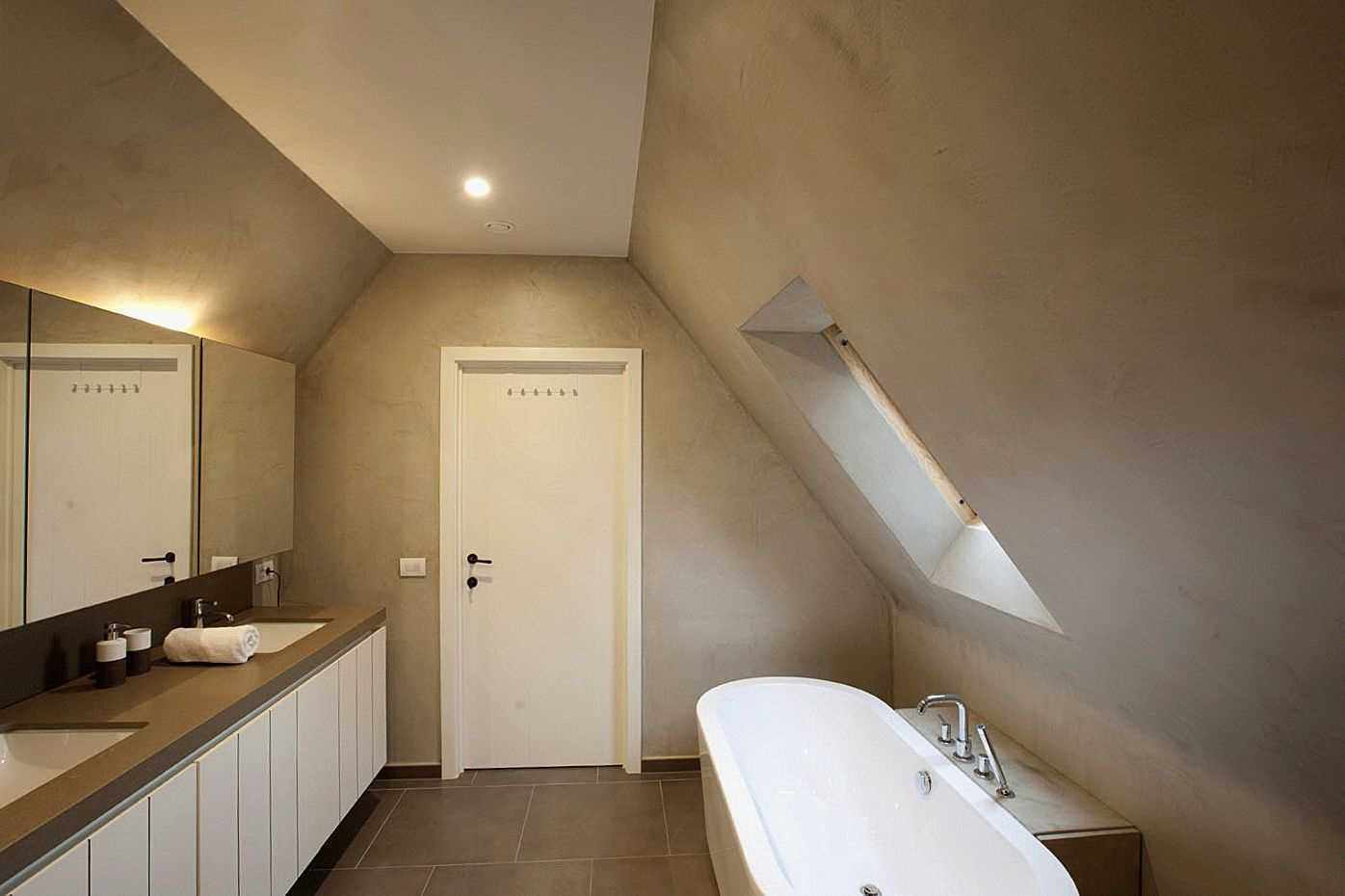
Plaster is very rarely used in the bathroom.

Certain styles require stucco wall finishes.

Decorative plaster has its advantages and disadvantages.
What is it?
Content
Decorative plaster is a finishing material, which consists of a bonding base and artificial fillers. The basis can be an acrylic copolymer, lime, kaolin, etc. Its choice depends on the type and name of the product. Of the fillers found sand, marble dust, natural mica, etc.
A feature of this type of finish is that it perfectly tolerates harsh conditions and destructive external conditions. Therefore, decorative plaster in the bathroom gets along well with a humid microclimate.
Did you know that thanks to the composition, decorative plaster can even be used in the bathroom.
It is used not only for decorating the bathroom, but also for other rooms, as well as the facades of houses. This invention is very useful in the design field, and allows you to realize ideas that were previously impossible with natural stucco.

Decorative plaster fits perfectly into the bathroom climate
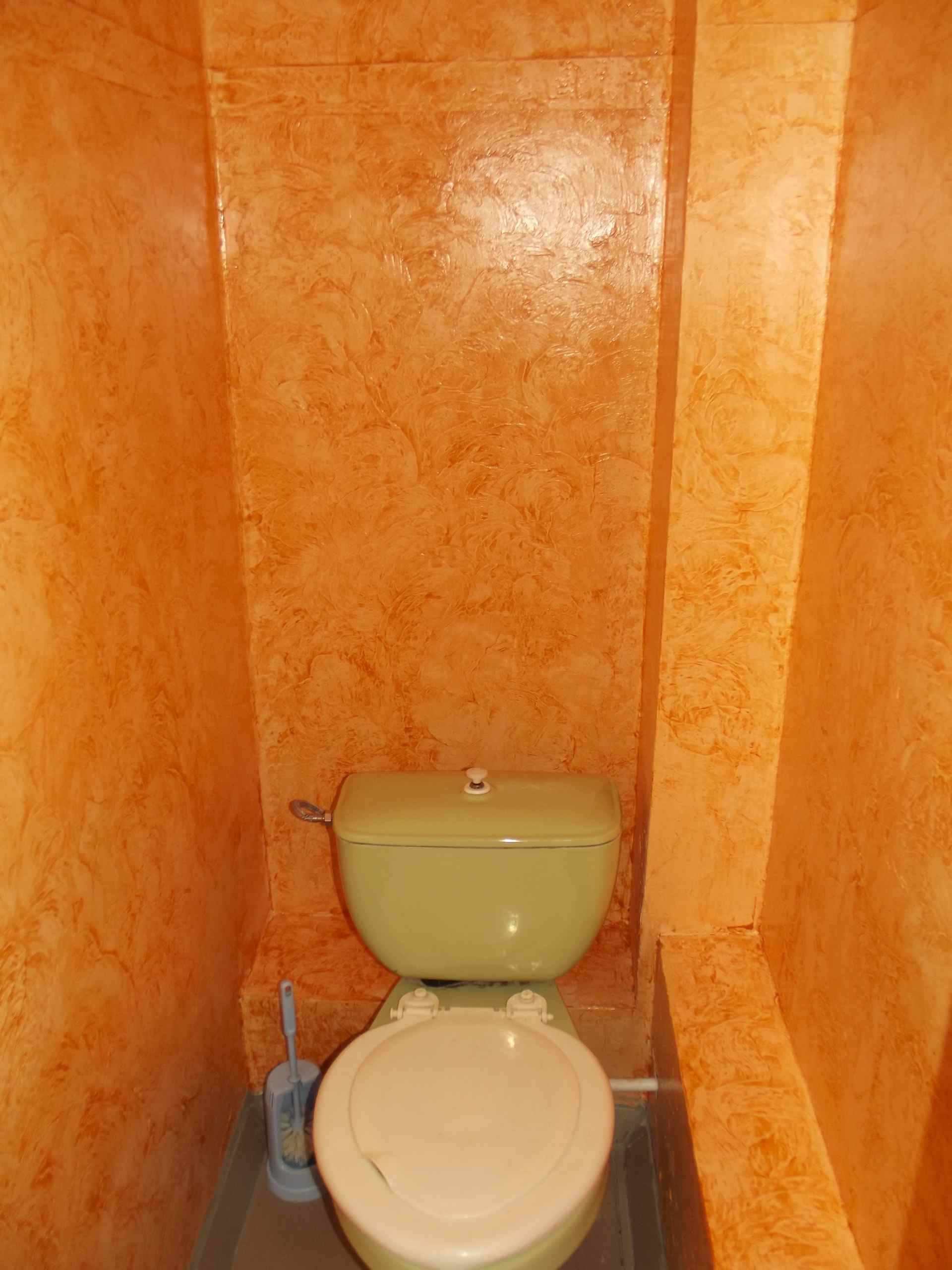
Decorative plaster helps to bring to life ideas that ordinary plaster could not cope with.
Varieties
There are many varieties of plaster. We can divide them according to several principles.
Depending on the basis.
|
View |
Characteristics |
|
Mineral |
The base is cement and lime. It has a pronounced relief. It is a species with the best indicators of moisture resistance. Wear resistant, strong and durable. Provides a free exchange of air between the wall base and the surroundings. The only drawback is unplastic. |
|
Acrylic |
It is based on a composition of ash elements and synthetic resins, as well as small fractions of glass, rarely marble. It has a less pronounced relief. Any paint can be added to the base; it is well accepted by the material. Of the disadvantages is the low degree of air exchange. |
|
Silicone |
Basis - silicone resins. Finishing the bathroom with decorative plaster of this type is the best option. It is plastic, easy to apply, does not fade under the influence of ultraviolet rays, has high moisture resistance and air exchange. |
|
Silicate |
Basis - liquid glass. It does not let water through, it prevents the formation of mold on the walls. It has a high level of vapor permeability. It has a beautiful appearance. Of the minuses - expensive. |

There are many varieties of plaster

Choose plaster based on the characteristics of the room

Silicate plaster is perfect for the bathroom, as it is moisture resistant
Depending on other fillers
|
View |
Characteristic |
|
Sanitizing |
Porous view, consisting of two layers: sanitizing - upper, and porous - lower. Due to its structure, it retains moisture well.Any decorative coating can be applied on top. |
|
Gypsum |
Easy to use, has a low price. It is elastic in its raw form, so it allows you to make a variety of patterns and any structure. |
|
Front |
Decorative look. It has a fairly rough surface. Durable, durable, withstands harsh operating conditions. Less: may contain toxic substances. It is used mainly in the exterior decoration of houses. |
|
Venetian |
Obtained by adding marble dust or sand. Also applies to moisture resistant species. It is used mainly in the bathroom. It has a beautiful appearance. With its help imitate stone or granite. However, it is known for its rather high cost. |

Plaster can be chosen for any purpose and premises.

Decorative plaster perfectly complements the interior
Decorative plaster intended for use in the bathroom can be separated by one more criterion: texture.
|
Structure |
Specifications |
|
Smooth |
It is the best option for the bathroom. It has a high degree of moisture resistance, which also increases due to the structure. |
|
Structural |
It has several variants of existence: furrowed-rough, modeling, uniformly-rough. It is rarely used in the bathroom, since particles of moisture accumulate between the folds, which leads to its rapid deterioration. |
So, silicone, sanitizing and Venetian are the most suitable types of decorative plaster for the bathroom.

The plaster for the bathroom is distinguished by the texture
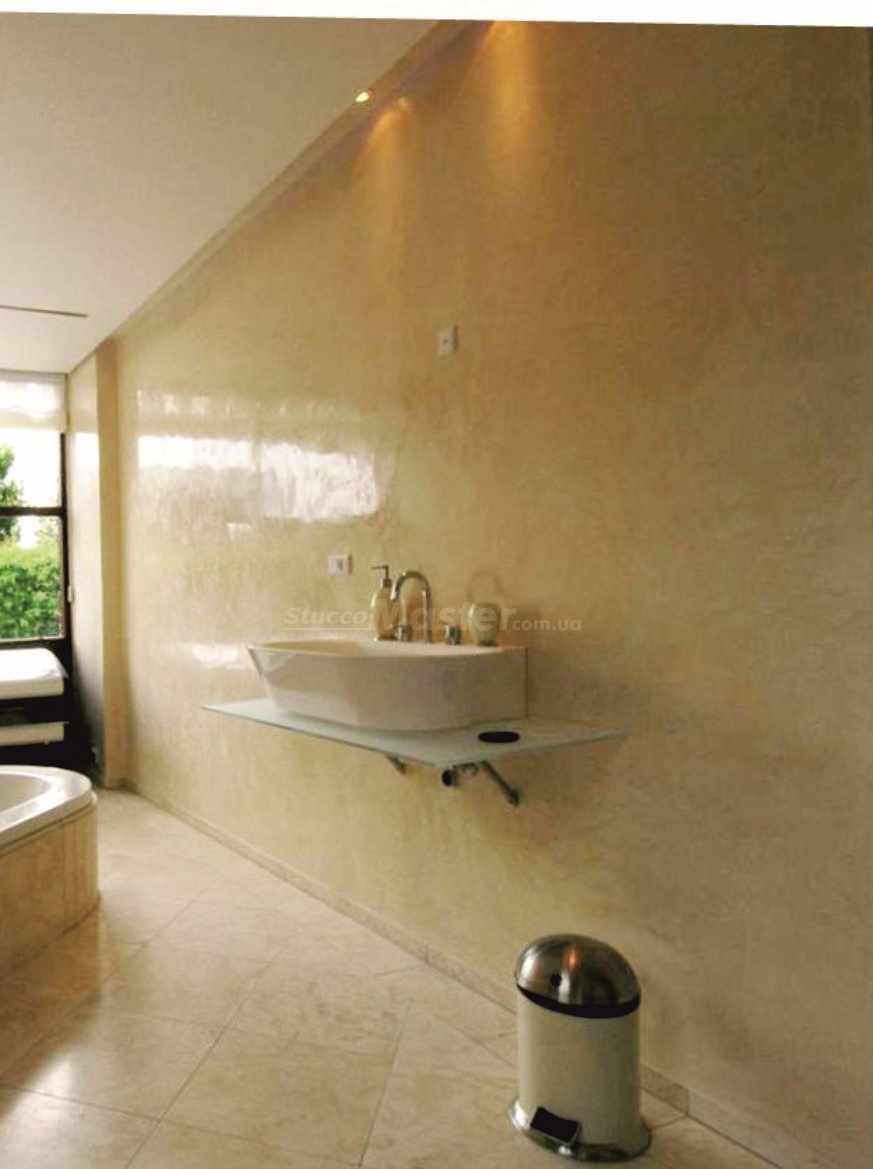
The smooth texture of the plaster is the perfect finish

Silicone, sanitizing and Venetian are the most suitable types of decorative plaster for the bathroom
Advantages and disadvantages
This type of cladding has received well-deserved approval. After all, it has many positive aspects.
- Vapor permeability. This factor helps maintain a natural microclimate in the bathroom, and prevents the appearance of mold in the bathroom.
- Moisture resistance. Thanks to this, decorative plaster in the bathroom will last a long time, and will prevent the accumulation of moisture on the walls.
- Simplicity and ease in leaving. This material easily tolerates the effects of household chemicals and hard washcloths.
- High adhesion. This allows you to cover it with a surface of any material, and it will hold for a rather long time.
- Large selection of varieties.
This method of decoration does not find negative sides. It can be used in the bathroom, and on the facades, and in the decoration of other rooms. Negative reviews can only appear if a low-quality product is selected. To avoid this situation, follow the rules of choice.

Decorative plaster will prevent the accumulation of moisture on the walls.
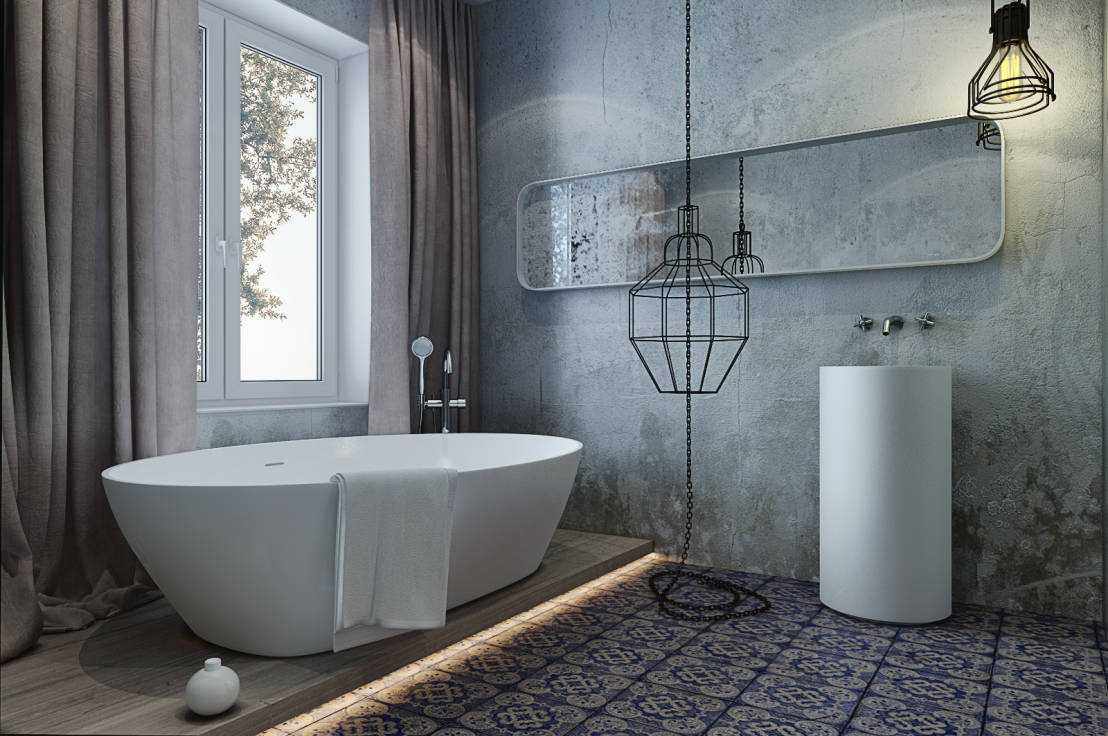
Give preference to trusted manufacturers, this will protect you from a low-quality product
How to choose the right
To purchase high-quality plaster, be sure to pay attention to the following details when choosing.
- Composition. The mixture should consist only of safe means.
- Shelf life. This material has a limited shelf life of 6 months. Be sure to look at the date.
- Packaging integrity.
- Manufacturer. Trust only trusted manufacturers with a good reputation.

Pay attention to the composition, the materials must be safe

Decorative plaster has a shelf life of 6 months, it is worth paying attention to

Check the packaging carefully for damage.
Do not forget about these simple rules, the chance to purchase a quality product will increase significantly. Now let's talk about the qualities of the material itself. In addition to quality and good external condition, it is necessary to choose plaster depending on the intended work. Take note of some features.
- working with liquid solutions is more difficult, as the proposed consistency may not be suitable for your needs.
- material containing crumbs of different sizes is most difficult to work with;
- plaster with a large filler will have to be applied only by hand.
- water-based material is not suitable for decoration in the bathroom.
Pay attention to the above types, they are all suitable for wall cladding in a room with high humidity. However, their composition is different. Carefully study the components and size of the crumbs before choosing a product.

Water-based material is not suitable for decoration in the bathroom

Before buying, carefully study the composition of the mixture
How to apply
The method of applying decorative plaster in the bathroom depends on its structure:
- finely dispersed using a special spray;
- coarse - with the help of hand tools (sponges, rollers, brushes, spatulas).
Interesting! In practice, plastering is often found with hands wearing rubber gloves. This method helps to create an unusual texture on raw material.
But before proceeding to the application, it is necessary to prepare the surface. To get started, remove the previous cover. Stains of rust or oil - wipe. Mold stains must be removed and treated with disinfectants.
If wall irregularities occur, they must be corrected before starting work. After removing the old coating, a layer of soil is applied. This is done to better adhere the material to the base. The soil layer must be at least 20 mm.
Now let the surface dry, and you can proceed to decorating the walls with plaster.

The way plaster is applied depends on its structure.

Very often plaster is applied by hand.

Before applying the plaster, prepare the surface.
Design ideas
This method is used to create antique and ethnic styles. Due to its elasticity, plaster allows you to make any relief that emphasizes every style. Also with this coating, you can wipe the walls in some places, creating the characteristic features of the Provence and Shabby-chic directions.
Smooth type is also widely known in use. It is characteristic of both modern and antique styles. With its help, they successfully make an imitation of granite or marble. This allows you to significantly save money and create a beautiful design.

Using decorative plaster, you can create any relief

Decorative plaster goes well with many interior styles
Decorative plaster goes well with other materials. It can be used to create wall decor in conjunction with tiles, wood or natural stone.
So, today we found out that decorative plaster is quite suitable for use in the bathroom. There are many of its varieties, and you need to be careful when choosing. Do not forget about proper care: periodically wipe the damp walls with a dry cloth and clean using special tools.
Video: Decorative coating in the bathroom
